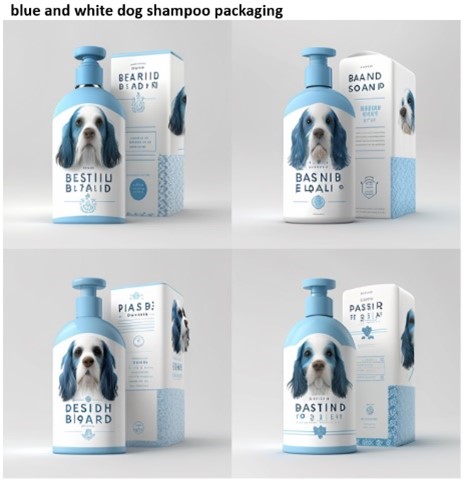The world has witnessed a surge in the popularity and fascination surrounding artificial intelligence (AI). Although AI is not a new concept, the recent emergence of advanced generative AI chatbot models, such as OpenAI’s ChatGPT, has propelled it into the limelight, capturing the attention of the general public like never before.
While social media platforms are inundated with individual AI experiments, the business world is also actively exploring the implications of these latest developments. One industry that is particularly intrigued by the potential of AI is packaging and branding. In this article, we will delve into one way in which brands will leverage AI in their packaging strategies.
Start experimenting with generative AI for package design
One of the primary applications of AI in packaging revolves around packaging design. OpenAI’s DALL-E 2 platform, as reported in September 2022, was generating over 2 million images daily. This number is expected to have skyrocketed as public awareness of generative AI continues to grow.
AI is now capable of generating a wide range of visual elements, including logos, avatars, and even competition-winning artworks. Consequently, designers have started to experiment with AI in the creation of packaging concepts. Ludovic Mornand from Studio Blackthorns, for instance, conducted an experiment to determine whether AI could produce a viable packaging design.
Mornand employed two AI tools, Hypnogram.xyz for generating packaging illustrations and Rytr for crafting accompanying copy, to develop a packaging concept for a non-alcoholic ready-to-drink brand named Alt Planets. Mornand estimated that the final packaging design was 80% generated by AI and 20% contributed by human input.
In a similar vein, Silas Amos recounted his own experiment on Dieline, where he used AI to design a bottle for a hypothetical fragrance endorsed by Kylie Minogue. These experiments provide compelling evidence that AI can play a significant role in the initial stages of packaging design.
It is important to note, however, that AI image generators are currently limited in their capacity to handle every aspect of packaging design. While they can generate impressive results, the overall design process still benefits from human involvement and creative expertise. AI serves as a powerful tool to aid designers in generating innovative concepts, but it does not replace human ingenuity.
Rapid Ideation
As brands strive to stay ahead in an increasingly competitive market, the use of AI in packaging design offers several advantages. AI can facilitate rapid ideation and exploration of various design options, providing a broader range of possibilities than traditional methods. Moreover, AI-powered tools can expedite the design process, reducing time-to-market and enabling brands to respond swiftly to evolving consumer demands.
In addition to packaging design, AI can also be employed to enhance other aspects of the packaging and branding experience. For instance, AI algorithms can analyze consumer data to personalize packaging designs based on individual preferences, creating a more engaging and tailored customer experience. Furthermore, AI-powered chatbots and virtual assistants can be integrated into packaging to provide interactive and informative experiences for consumers.
Generative AI will augment the package designer, nor replace the package designer
As AI technology continues to advance, it is likely that brands will increasingly rely on AI-powered solutions to generate initial packaging concepts, optimize design processes, and deliver personalized experiences to consumers. However, it is crucial to strike a balance between AI and human creativity to ensure that packaging design remains authentic, resonates with consumers, and reflects the brand’s unique identity.
In conclusion, the advent of AI, particularly the emergence of advanced generative AI models like ChatGPT, has opened up new avenues for brands to explore in packaging and branding. The potential of AI in packaging design is promising, as demonstrated by experiments conducted by designers like Ludovic Mornand and Silas Amos. While AI is not yet capable of handling all aspects of packaging design, it can significantly contribute to the ideation and conceptualization stages.


Leave a Reply